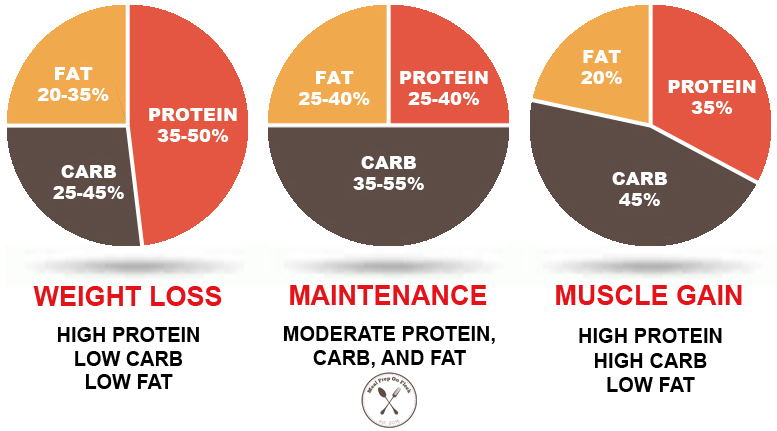Over the past few weeks, I’ve focused a lot on different types of exercises and routines that you can implement in your fitness journey, but this week I want to shift focus outside of the gym and examine the importance of diets.
You could work out for hours every day if you wanted to and had the time. However, if the food you use to refuel and replenish you body is “trash”, you are not going to see any significant changes. There’s value in having some insight about this because many individuals don’t understand just how important it is towards your fitness progress. For example, it is crucial to eat a lot of protein before and after your workouts (especially if you are lifting very heavy), in order rebuild muscle and “get big” because lifting and other forms of strenuous activity actually break down muscle fibers. Similarly, if you plan on running 10 miles three out of your five running days, you want to get in a lot of carbs, since they will provide that immediate energy needed to go the extra miles when the fatigue kicks in.
I’ve mentioned proteins and carbs, but what exactly are they? When fat is included in this list, they can be referred to as macronutrients. These substances are required by our body in order for us to grow, develop, and function properly.
Carbohydrates are basically sugars which can be split into three groups: monosaccharides, disaccharides, and polysaccharides based on how many individual sugar molecules are involved in the structure (biology come through!). However, most people prefer to look at carbs as simple or complex. Simple carbs, like fruit and milk, digest very quickly. Complex carbs, such as brown rice and high-fiber cereals, take slower to digest, releasing energy over a longer period of time. You can’t say which one is better than the other, it depends on your goal. Working out? Opt for the a banana or apple to get a boost. Not eating dinner until very late? Sub out bread for brown rice to keep you full for longer.
Proteins, in my opinion, are the most important. They are the main character in the muscle rebuilding process. Go amino acids! Sources of protein will include meats (chicken, beef, fish, etc.), eggs, dairy, lentils, beans, grains, and nuts. These sources will differ in their composition of amino acids (the building blocks of proteins) and have different effects on the body. For example, casein and lactoglobulin are some of the proteins found in different dairy products. Eating foods rich in these (over plant protein) is better for protein synthesis and thus, muscle recomposition. Again, it depends on your goals.
Last are the fats. The macronutrient most people fear. Fats, or lipids, are very simple in molecular structure: phosphate head and two fatty acid (hydrocarbon) tails. This allows them to stack easily, forming saturated fats or if a chain is “kinked”, unsaturated fats. For avid fitness-goers, it is best to keep a diet low in saturated fats (butter, lard, etc.) and high in unsaturated fats (oils). This is because unsaturated fats are involved in lowering cholesterol and keeping the levels of “good” cholesterol, HDL, high. Fats are essential in our diet for serving as insulation and long term energy. Just think about it this way, if it wasn’t for fat, when you let go of your weight at the top of the pull up bar, it would hurt a lot more than it does now….

For many individuals working out, a lot of time is put into creating the perfect composition of macronutrients. Runners need a lot of carbs and protein, so their composition may look be 50% carbs, 30% protein, 20% fats. Powerlifters need a lot for more protein in their diet so their composition might formulate as 40% protein, 30% carbs, 30% fats. These variations can then be used to figure out exactly how many grams of each you need based on your caloric needs. Yes, you can go through the math that combines overall calories, calories per gram of macronutrient, and the percentages above but there is an easy way: use an app!

It’s important to consider that composition and macronutrients needs will vary from person to person based on what goals they are trying to achieve. However, as long as you are getting the necessary amounts and from healthy sources that benefit your body and make you feel good, that is all that matters.
February 17, 2023 at 6:00 pm
Great post! I like to exercise but HATES to diet. I am the worst at eating healthy and just like hamburgers, fries, fast foods, and junk food all day round. I feel bad afterward, so I’ve been trying to change that and order HelloFresh to begin somewhere. I love how informative your post was. I liked the pictures you chose for this post, as they put some color and made the post seem more interesting while discussing nutrients and stuff that I typically don’t enjoy reading about. Great job!
December 2, 2022 at 2:22 pm
I loved this post- it was different than your normal post but very informative. I think the science of diets is fascinating and something super cool to learn about!
November 11, 2022 at 4:32 pm
Good diverge from your typical post. You need to include sources, though. Watch for a few grammatical errors as well. Overall, very informative piece.
November 13, 2022 at 1:46 pm
I hyperlinked the sources for easy reference.